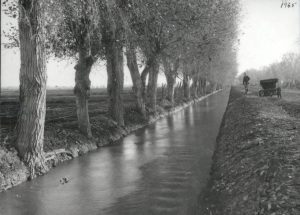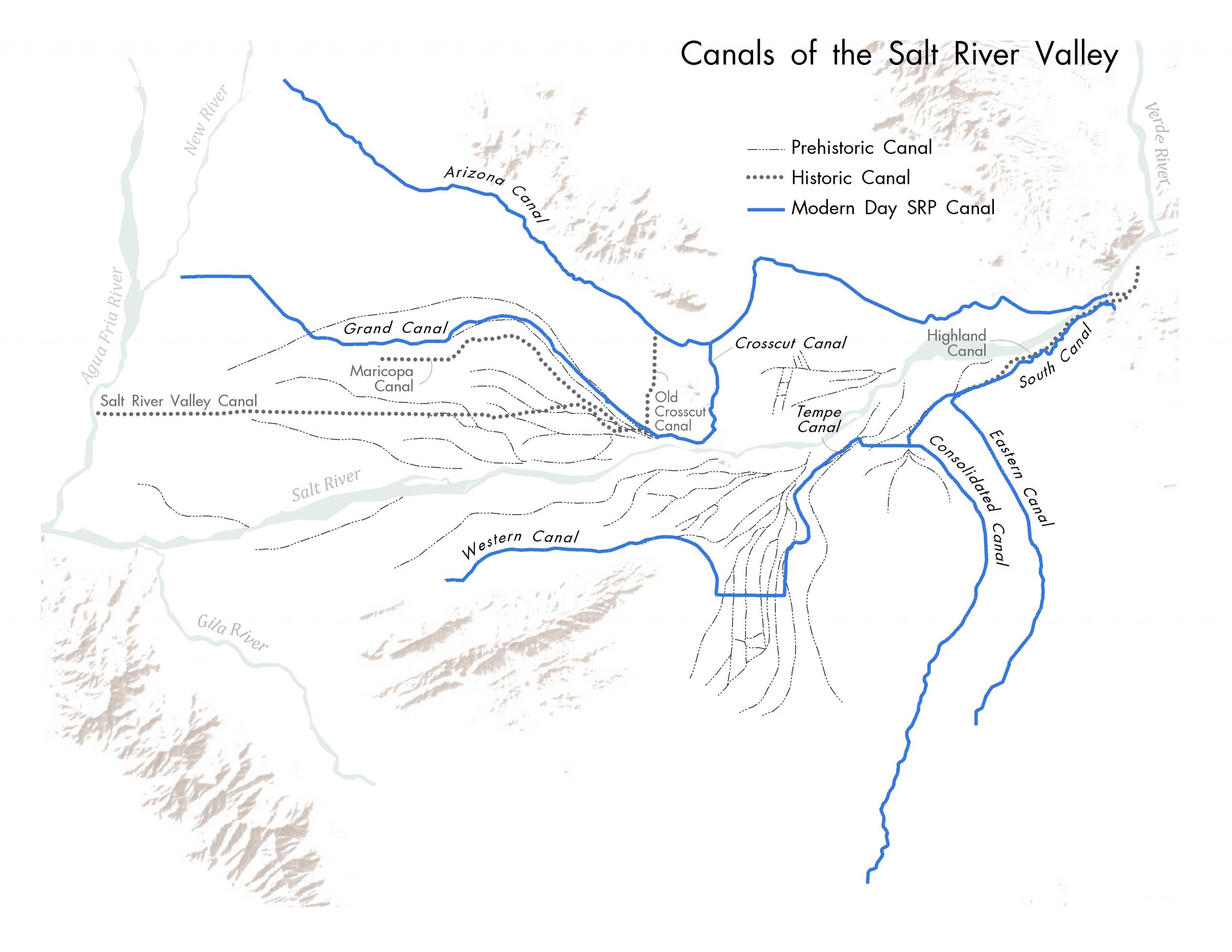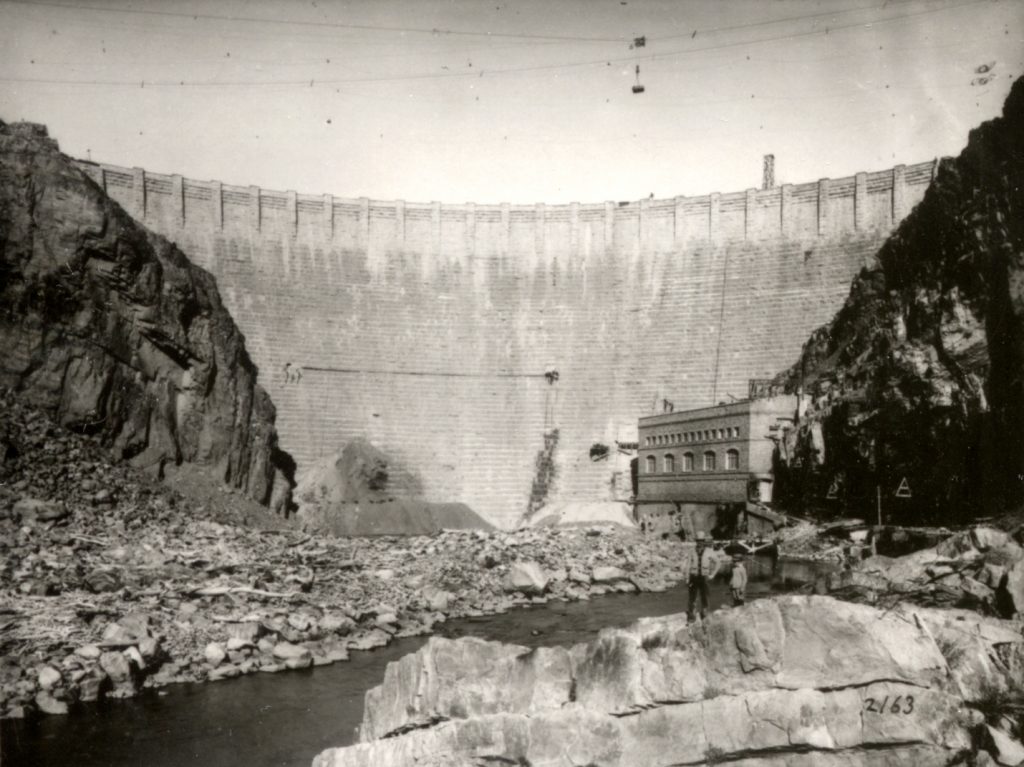The story of water in the Salt River Valley began more than a thousand years ago, with a group of people we call the Hohokam. The Hohokam lived in the Valley from approximately A.D. 450 to 1450, and constructed a complex network of canals and laterals to support their agriculture. When the first American settlers arrived more than 400 years later, they began building the Valley’s modern canal system — sometimes in the same pathways as the Hohokam. Today, SRP’s canal system mirrors the Hohokam system in many ways, especially in the use of gravity to move water across the Valley.
The early American settlers in the Valley took the long view when it came to their water supply. They asked Congress to set aside the lands along the watershed that fed the Valley — the streams and tributaries that fed the Salt and Verde rivers — to protect these lands and the water they provided. Even with the watershed protected, the water supply to the Valley was still unreliable. There were too many claims to the water in the Salt River, and a series of floods and droughts caused uncertainty.
 When a serious drought hit the area between 1898 and 1904, the local residents looked to the idea of reclamation — reclaiming arid land by building irrigation infrastructure. Several prominent Valley residents went back to Washington, D.C., to lobby for the passage of the National Reclamation Act, which President Theodore Roosevelt signed into law in 1902. The act provided federal loans and expertise to build infrastructure, but required that the title to any infrastructure built remain with the federal government. It also required that the debt for reclamation projects be borne equally among those who would benefit from them.
When a serious drought hit the area between 1898 and 1904, the local residents looked to the idea of reclamation — reclaiming arid land by building irrigation infrastructure. Several prominent Valley residents went back to Washington, D.C., to lobby for the passage of the National Reclamation Act, which President Theodore Roosevelt signed into law in 1902. The act provided federal loans and expertise to build infrastructure, but required that the title to any infrastructure built remain with the federal government. It also required that the debt for reclamation projects be borne equally among those who would benefit from them.
In response to these provisions in the Reclamation Act, Valley residents came together to form the Salt River Valley Water Users’ Association (Association), putting their land up as collateral to secure reclamation loans from the federal government. With the Association in place, the Salt River Project was selected as one of the first five federal reclamation projects in the United States. Without delay, the residents of the Valley got to work on the cornerstone of the Salt River Project: Theodore Roosevelt Dam.
 More than 113 years later, SRP continues to operate on behalf of the federal government, maintaining the reclamation tradition and delivering water and power to residents of the Valley.
More than 113 years later, SRP continues to operate on behalf of the federal government, maintaining the reclamation tradition and delivering water and power to residents of the Valley.
Learn more at SRP Presents: The History of Water in the Valley and Healthy Watersheds, a Mesa Living Green event on July 14, 2016 from 6-7:30 p.m. at Mesa Main Library. Leah Harrison and Rebecca Davidson from Salt River Project will take you on a historical journey of one of the oldest multipurpose federal reclamation projects in the U.S. The City of Mesa Water Resources and Water Conservation staff will also provide brief presentations, and before or after the program you can view the art exhibit of Tony Winters, a series of paintings of Arizona water features titled “Desert River/City River.” Mesa Main Library will be featuring the art exhibit during the month of July.

Salt River Project is one of fifteen Water – Use It Wisely partners to offer water-saving advice and programs. While summer programs are fewer, be sure to visit our Water – Use It Wisely calendar for events taking place by all of our Water – Use It Wisely regional partners!
From time to time, Water – Use It Wisely features guest bloggers who write about topics related to water and water conservation. Leah Harrison is a Historical Analyst with Salt River Project’s Research Archives. A native Phoenician and former secondary history educator, Leah earned her Master’s Degree in Public History and a certificate in Scholarly Publishing from Arizona State University. As a historian with SRP, she analyzes the history of water and power in the valley.


